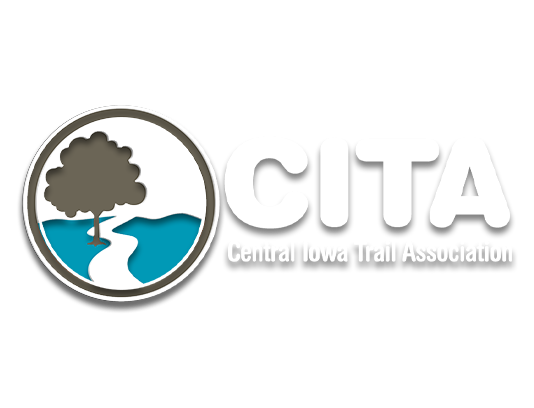trail guidelines
Our trails are located in city, county, and state parks
in and around Des Moines and Central Iowa.
support the trails:
Trails don’t build or maintain themselves. Become a CITA member, donate, and/or volunteer to help us keep the trails you ride open and safe for everyone.
trail guidelines
Always follow all posted signage.
Do not use muddy trails! If it is sticking to your heels or wheels, turn around. As you know, #RutsSuck.
Keep singletrack, single. If you come to an unexpected puddle, walk or ride straight through the middle.
Pets are allowed as long as they are kept on a leash six (6) feet in length or shorter and personally attended at all times, no exceptions.
Stay on defined trail surfaces and do not “free ride” into the landscape.
Only bike or hike on open trails.
Hiking is allowed on the single track trails unless posted restricted.
Same rules apply for hikers as bikers.
Prohibited Uses
Motorized vehicles (any non-human powered or non-ped assist vehicle; i.e. motorcycles, eBikes without fully operable pedals, ATVs, etc.).
Riding or hiking on wet/soft or muddy trails.
Any activity that causes damage to the trail tread by foot or bike.
Jump line trails at Ewing Park - Hikers and pets are not allowed on these trails.
Unauthorized building or modification of trails and/or technical features.
Horseback riding on single track trails.
eMTB & eBike Information for the State of Iowa
In Iowa, an e-bike is defined as a “bicycle,” so long as the ebike's motor is under 750w, with a top motor-assisted speed of 20 mph under motor power alone, and with fully operable pedals.
EMTB guidelines tend to vary on federal, state, county, and local trails. eMTBs may not be allowed on trails managed for non-motorized activities. If you aren’t sure, contact the local land manager for clarification. More information here.
Guide For Trail Closures
When it rains, the single track trails will be immediately closed to all users (foot or bike) until trail conditions dry out or improve. In the spring or fall season, the trails will need an extended amount of time to dry out and firm up before reopening because of the cooler temperatures.
Early or late season snow will immediately close the trails to all users (foot or bike) when the ground is unfrozen or until trail conditions dry out or improve.
Wet, soft or muddy trails are closed trails, muddy bikes or footwear are key indications of closed trails.
Ground freeze/thaw happens when the frozen ground is exposed to sunlight or above freezing temperatures, this makes the frozen trail tread becomes very soft or muddy, it is extremely easy to damage the trail tread during this time, leaving tire ruts or footprints in the trail tread are key indications that the trails are closed.
[Pictured Sycamore Trails] Photo by Ken Sherman

![[Pictured Sycamore Trails] Photo by Ken Sherman](https://images.squarespace-cdn.com/content/v1/5573c70ee4b0793b94a089d6/1602165295259-H6GXM4CNX289DS7K55C3/120766799_1215395552152607_3034874279106384702_n.jpg)